I love boat tours so much so that if there is a chance to hop aboard one, I usually take it! In Ohrid, there are a few options to choose from. While you can always opt for a trip on a bigger ship that would cost you 15 Euros, I highly recommend you stick with a small catamaran that will charge you 25 Euros for a similar but significantly better journey! Join me as I detail the sort of day that awaits you if you decide to head to Lake Ohrid and enjoy its sights through a boat tour as well.
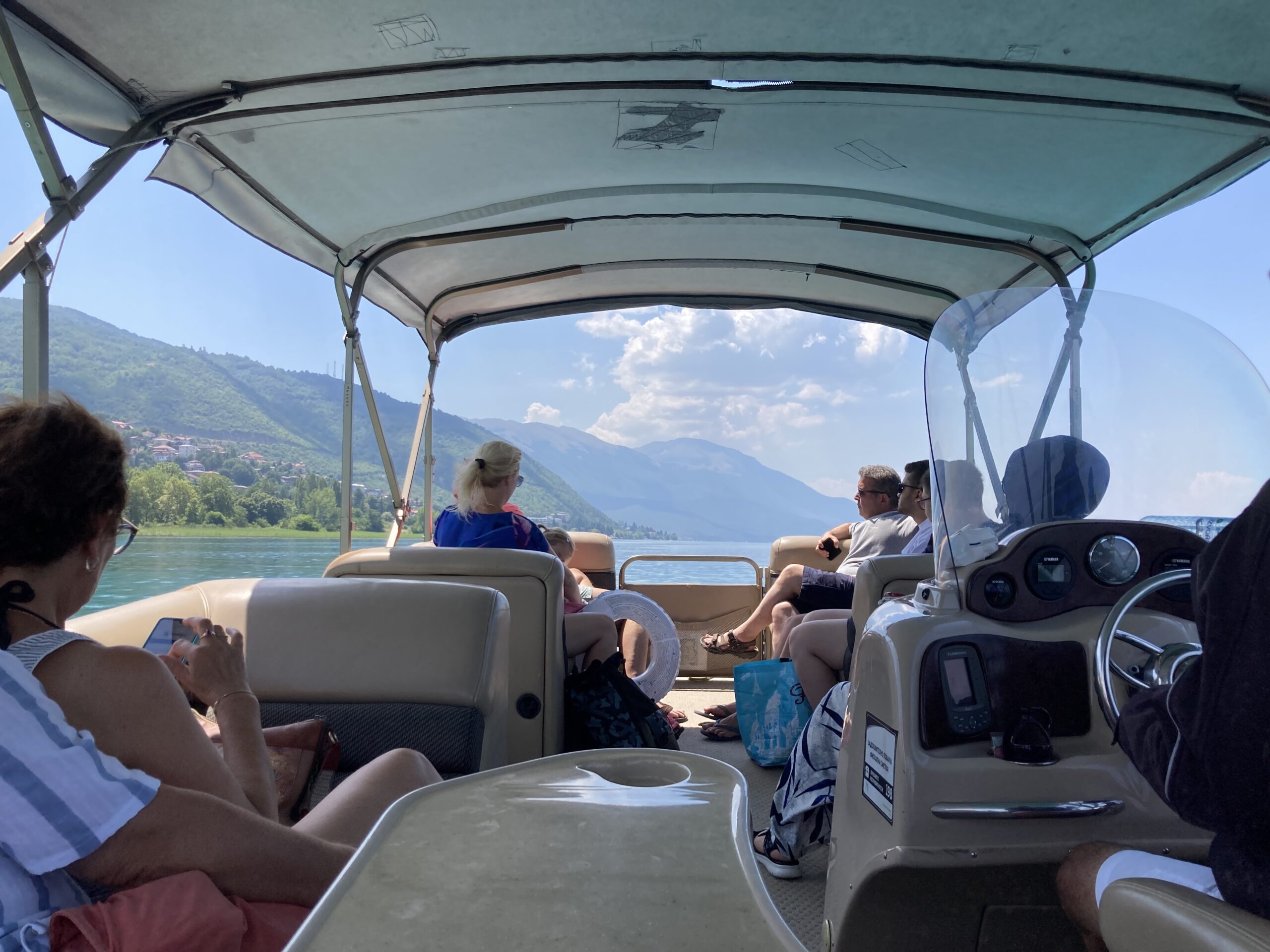
We chose Mato Catamarans for our boat tour on Lake Ohrid for two simple reasons. While there are cheaper options, these are also much bigger ships. You will be sitting on some uncomfortable wooden seats alongside many others, skip a church you cannot dock at due to the size of the ship you are in, and will most likely have to put up with screaming kids throughout the journey. This is not to badmouth these cheaper cruises. They do have some advantages that may work for you. They have a toilet on board, and more importantly, because they skip a stop, they spend more time visiting St. Naum, where you can enjoy the best beach that you can find anywhere on Lake Ohrid. In any case, no matter which boat you choose, you will enjoy a similar journey.
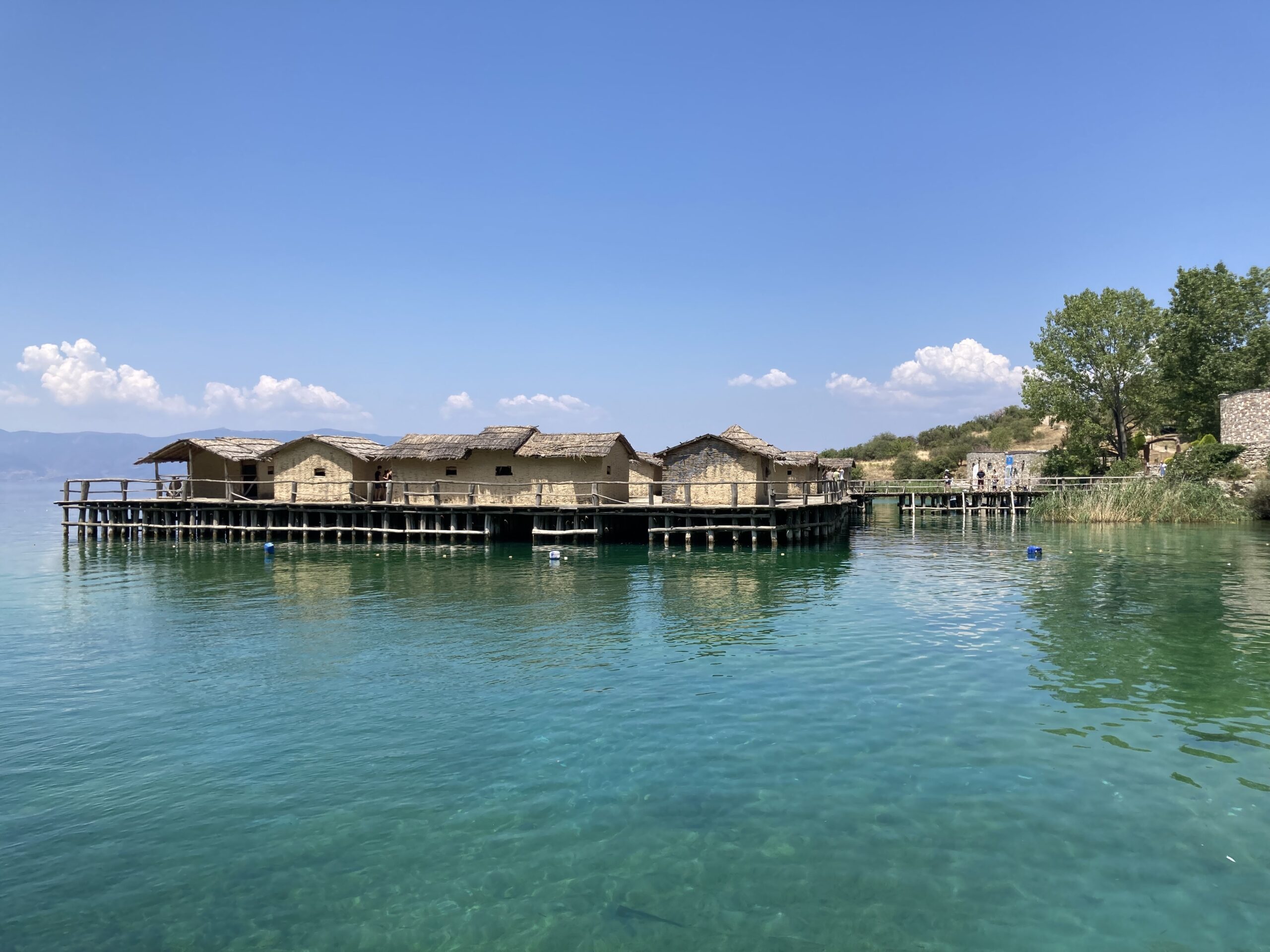
After a quick look at the city of Ohrid from the sea, ships slowly make their way down south, to the Bay of Bones. Here, you can see a recreation of an almost 3000 years old settlement that was found on this spot by archaeologists some time ago. You can see some of the said archaeological remains now on display inside the museum, though I did not care enough to venture in myself. The area itself is gorgeous, but it will pale in comparison to what you will see next.
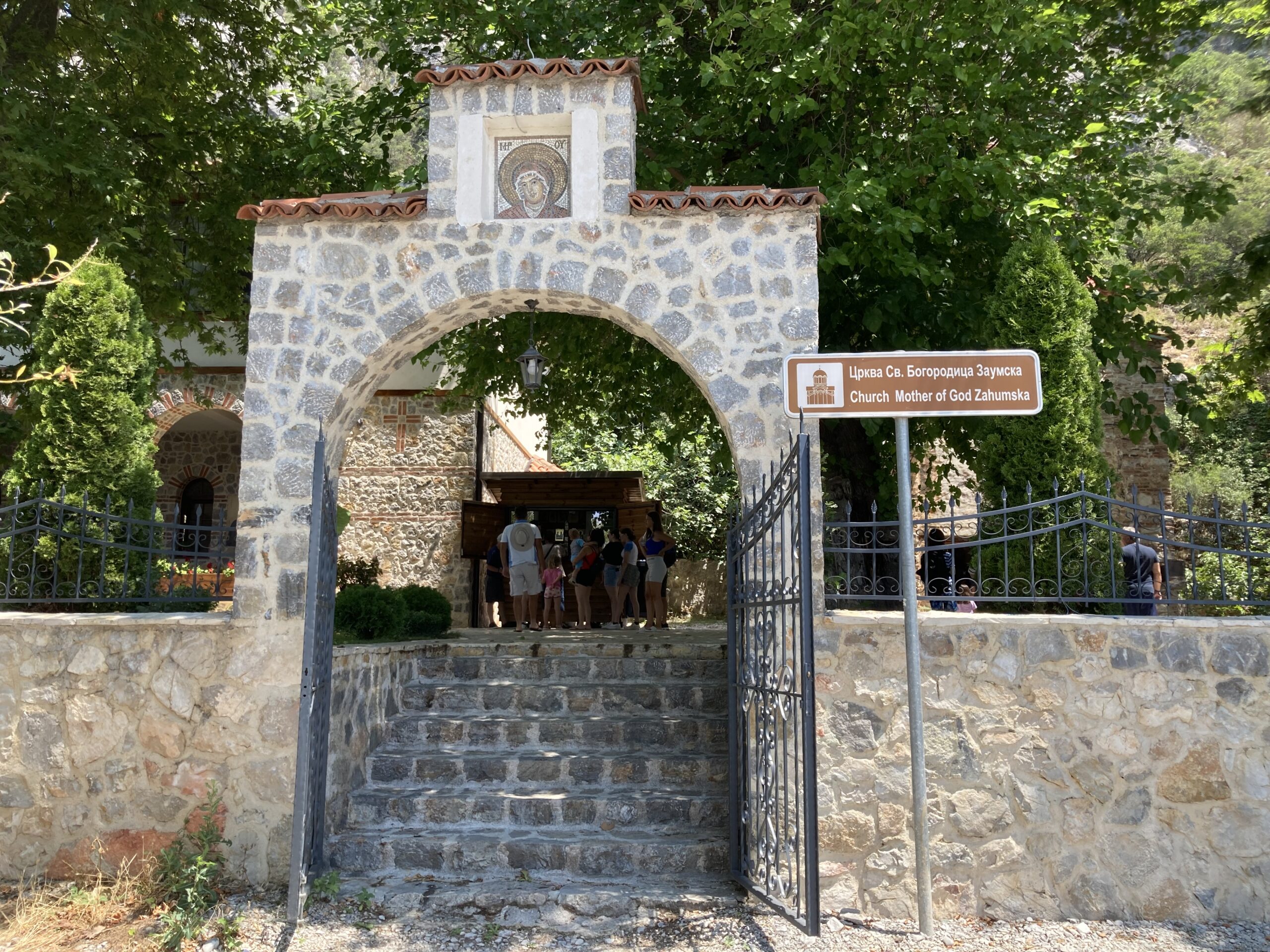
If you take one of the smaller boats, you will make your way down to Church of Mother of God Zahumska. This is such a peaceful spot that, apparently, even the Macedonian Orthodox clergy come here for their own holidays. I am not so sure what that entails, but I suppose they stop their everyday duties and just enjoy the day with the company of others for a few weeks.
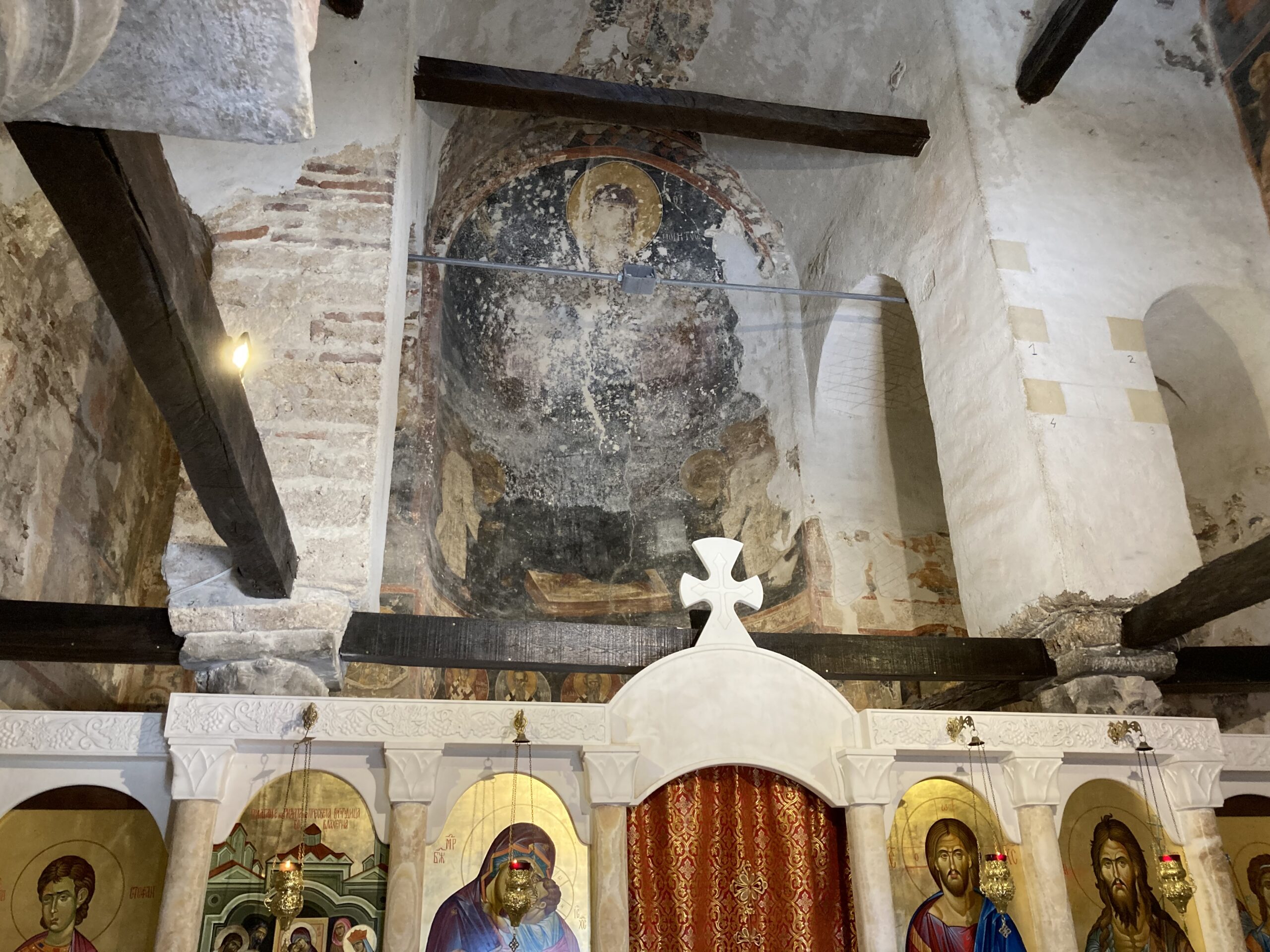
The church itself is not in the best of conditions. Though I assumed the damage may have been mostly done during earlier periods, apparently, a group of so called “hippies” took up refuge in this church once the Yugoslav government wanted to provide them all with jobs, as our captain put it. These men destroyed the church from the inside out, apparently, after some drug-fuelled nights. I cannot confirm the accuracy of this story, but this is what I have been told by our rather devout captain.
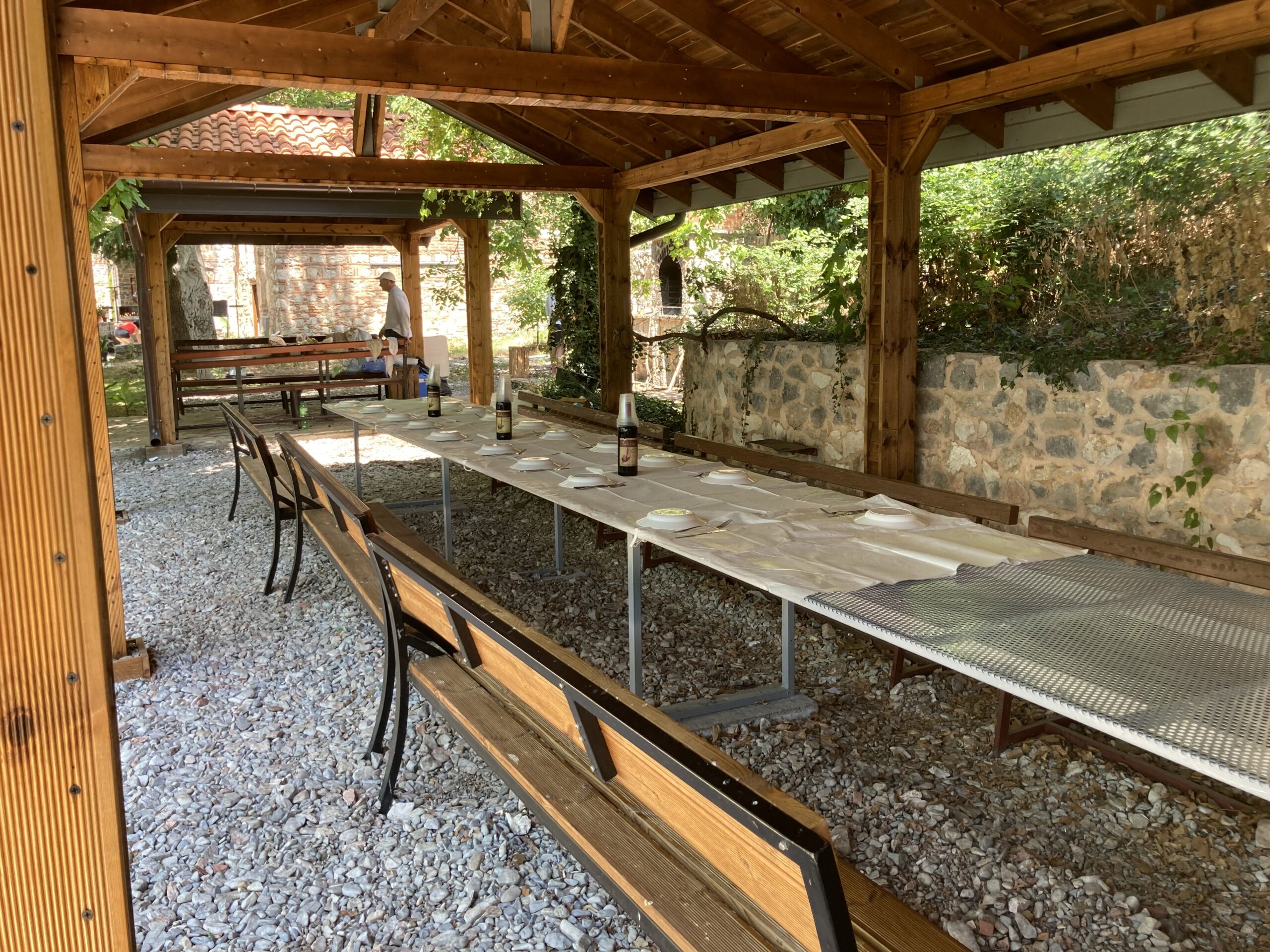
While I was wondering around the small courtyard of the church, I came across this lovely table. Many plates were already put on it, as well as a few bottles of wine with plastic cups on top. Meat was put on the grill, and a cook was preparing a salad. While us travellers were busy seeing the sights, I realized the priests (presumably on holiday) were getting ready to enjoy a feast!
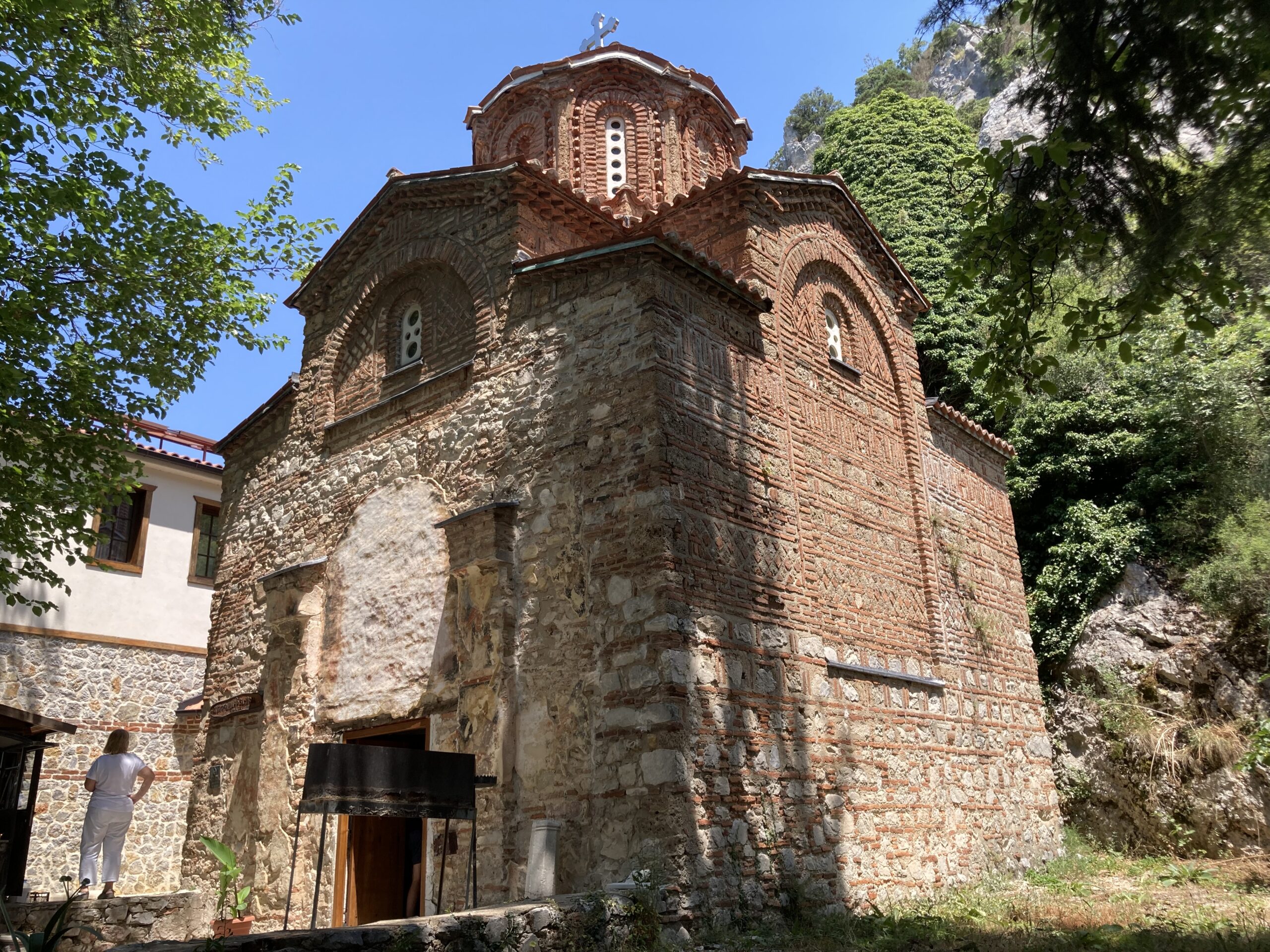
Before we left the church (and priests) in peace, we also saw something incredible thanks to our captain. While the entrance of this church looked a bit off, I did not realize that an entire front section was destroyed at some point due to external forces, until our captain pointed it out. These broken looking pillars are, in fact, part of a wall that does not exist anymore. That is why there are remains of some mosaics on the outside of this church, which is extremely rare. The reality is, said mosaics were once inside, which explains this oddity.
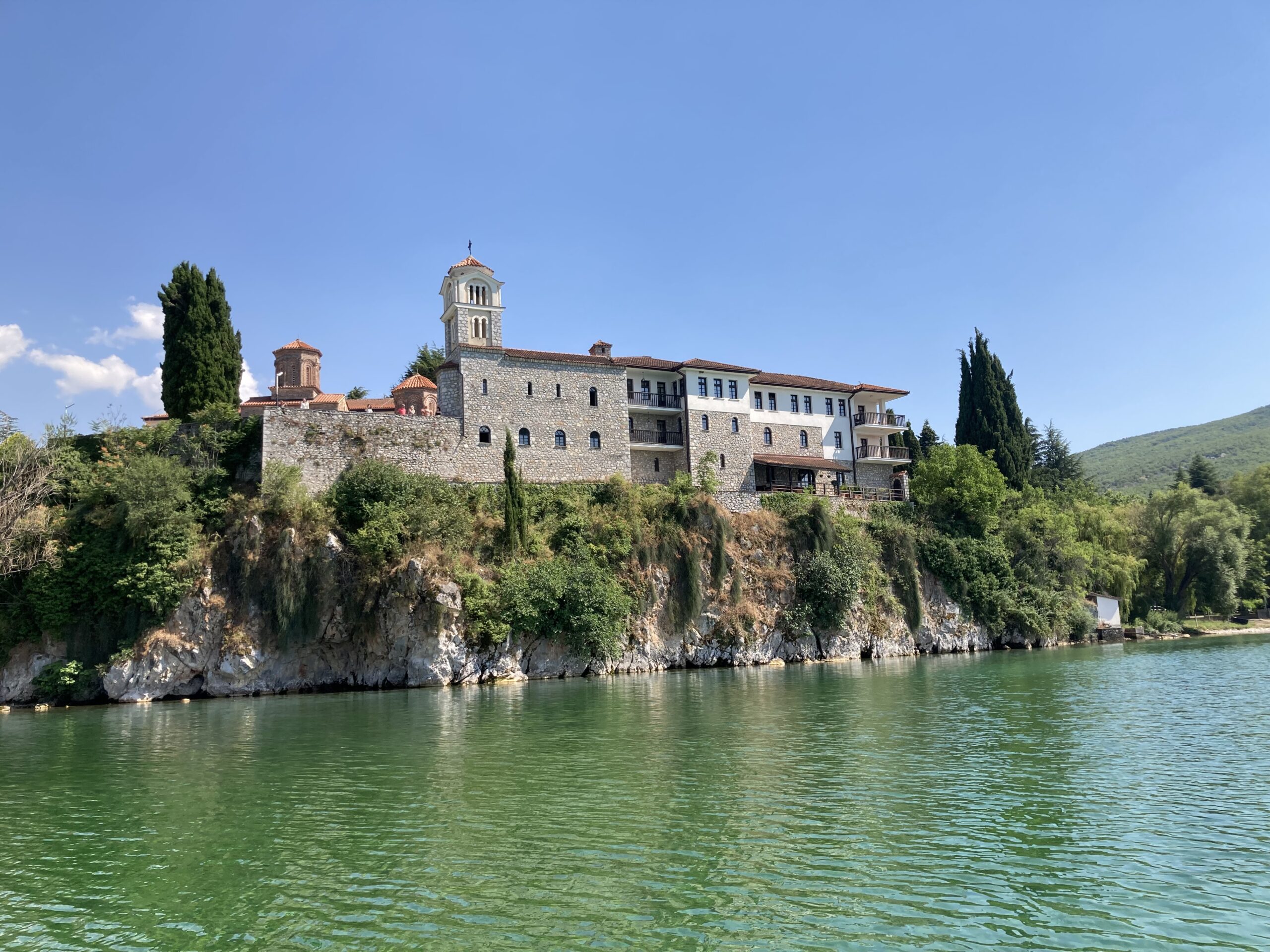
While Church of Mother of God Zahumska is indeed a beautiful place, a “desecrated holy place” as our captain put it, pointing at the ladies in bikinis using the beach in front as their private sunbathing lounge, this whole journey would not have existed without its final destination: the Monastery at St. Naum. As you come close to dock near this monastery, you can already tell that you are in for a treat.
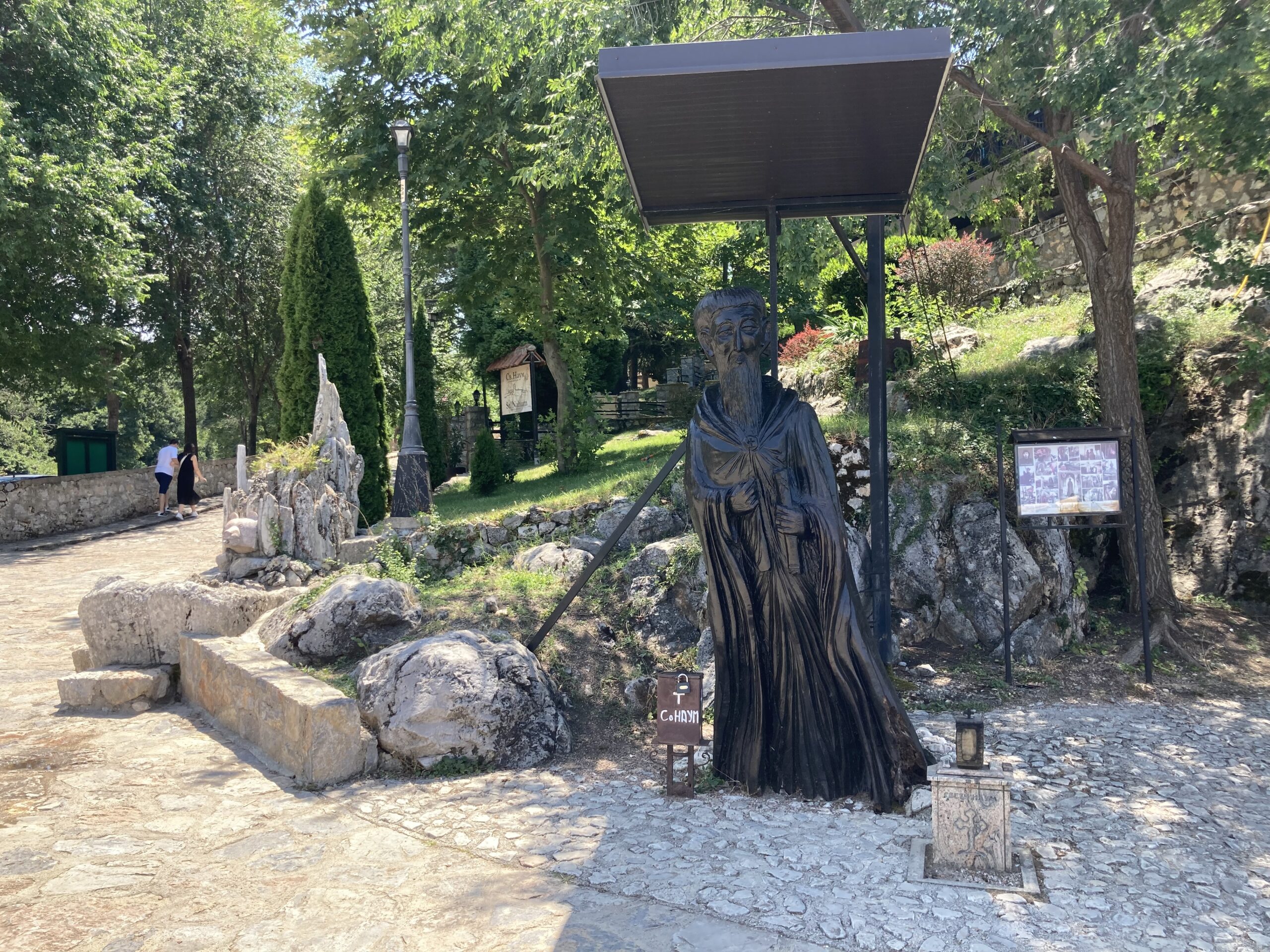
Some quirky sculptures of old timey religious figures greet you as you make your way out of the docks and up to the monastery.
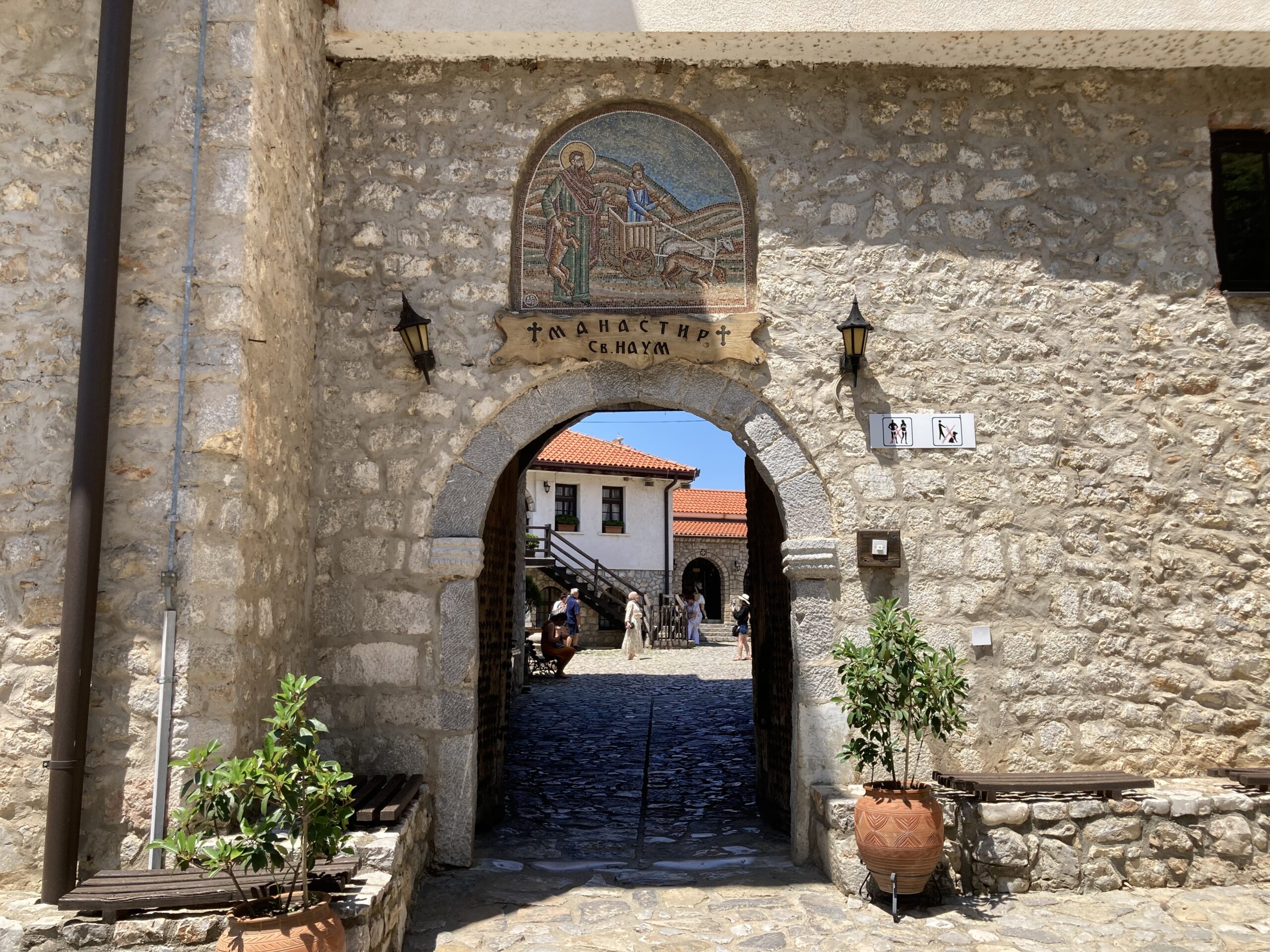
Eventually you pass through this gate and make it into the monastery proper.
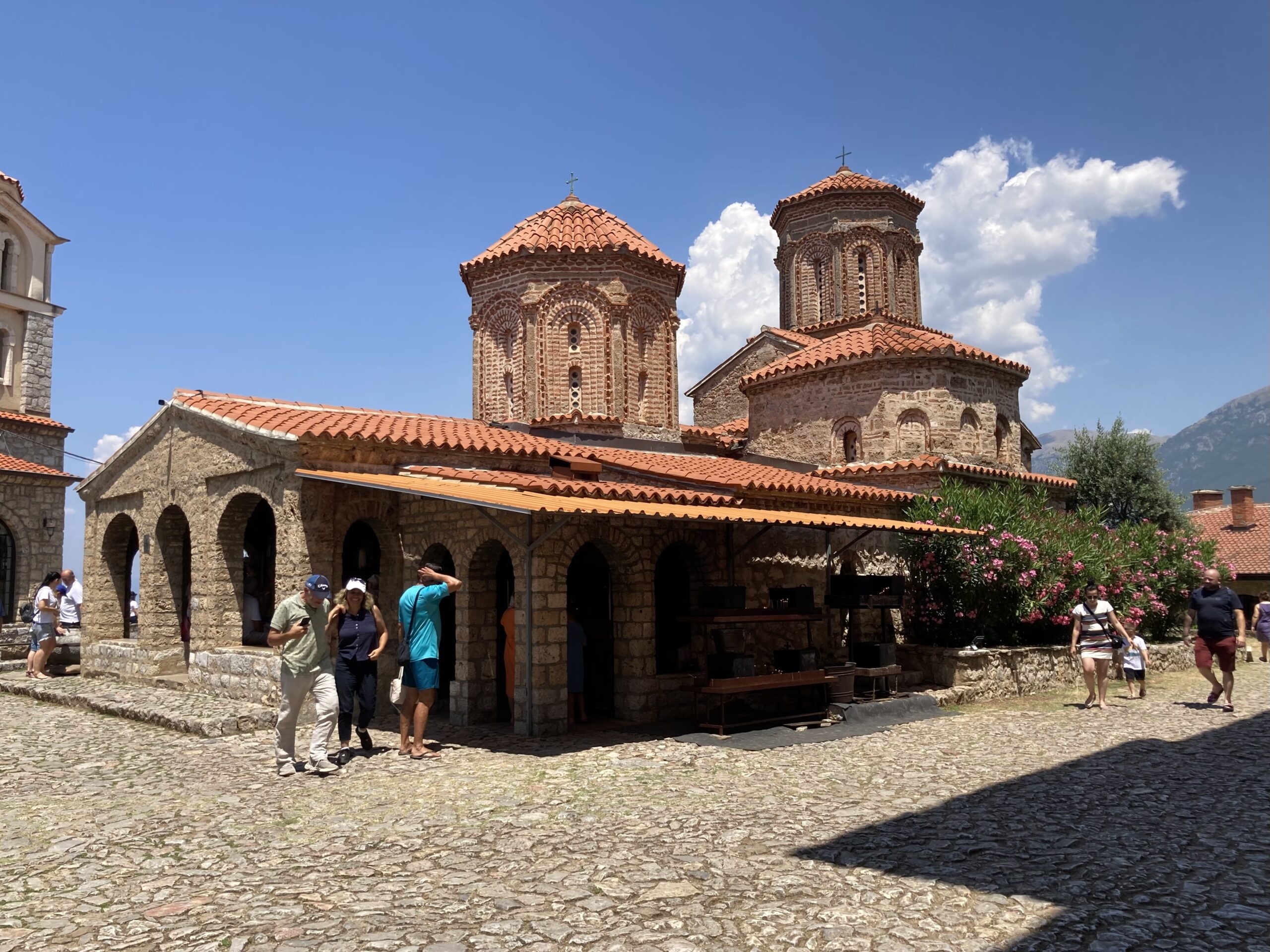
While the whole complex is beautiful and free to enter, this central church is the only place you have to pay to get in. It was swarming with tourists when I was there, at least three separate Turkish groups were waiting in line, and there were some Italians and Bulgarians on the side. The priest who manned the ticket counter was handing out some rakija faster than he was giving people back their change. While I sort of wanted to check out what was going on inside, knowing we only had two hours in this heavenly place, I opted to see the remainder of the area in more detail instead, and to enjoy the surrounding waters a bit if I can.

Though the courtyard of the monastery was full of beautiful decorations and a decent number of resting spots, there was no time for any of respite! Thinking that maybe, just maybe those who took the cheaper, yet bigger ships had a point, as they got to spend more time in this part of the trip, I quickly made my way down to head to a special place.
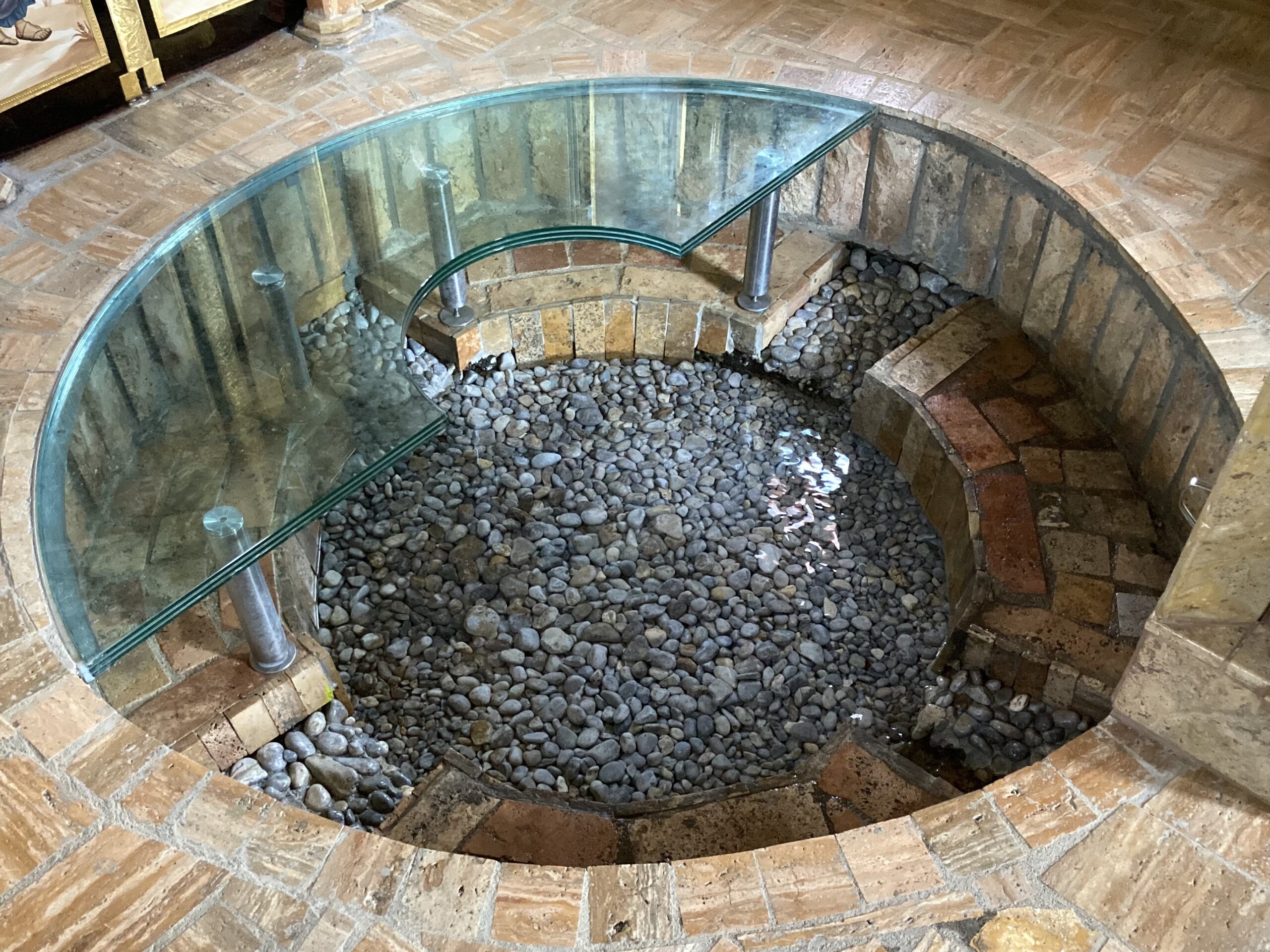
As is the case with most lakes, there are a few springs that eventually feed what is Lake Ohrid today. This whole area is home to a few springs, some are tiny, some are larger. If you take a few kilometres “hike” along a specifically labelled route, you can see most of these springs. The first one that I came across happened to be contained in a small church of sorts, as you can see here.
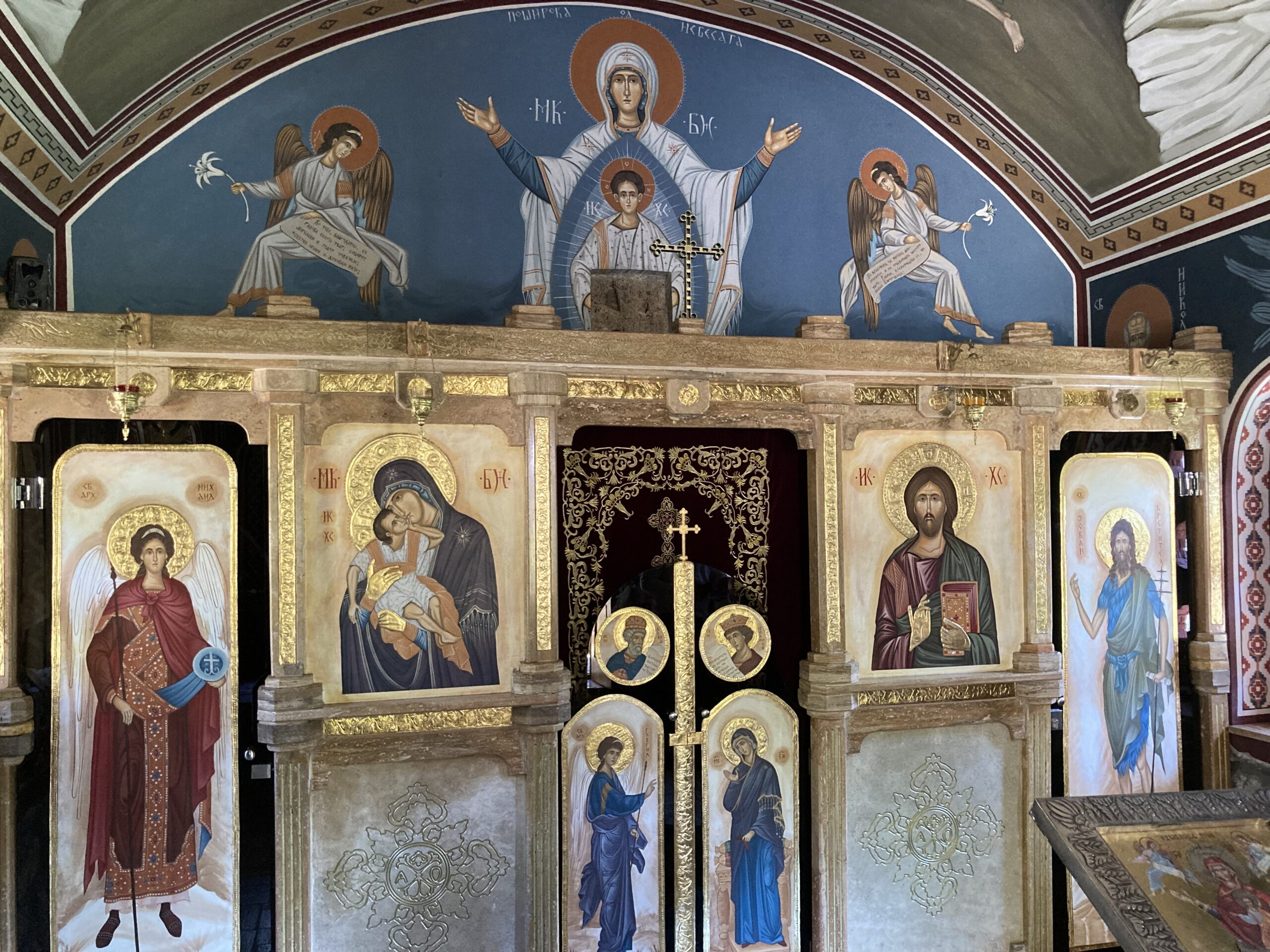
While the church itself was nothing to write home about, it was very interesting to watch the priest do “something” with the water that came from that spring. He took it and used it on some plants, and then filled a bottle, and then put the said bottle on a counter on the outside. Without understanding the ritual at all, I made my way back to the main path.

This was the tiny church with the small spring inside of it. There was yet another spring just behind it as well, this time outside.
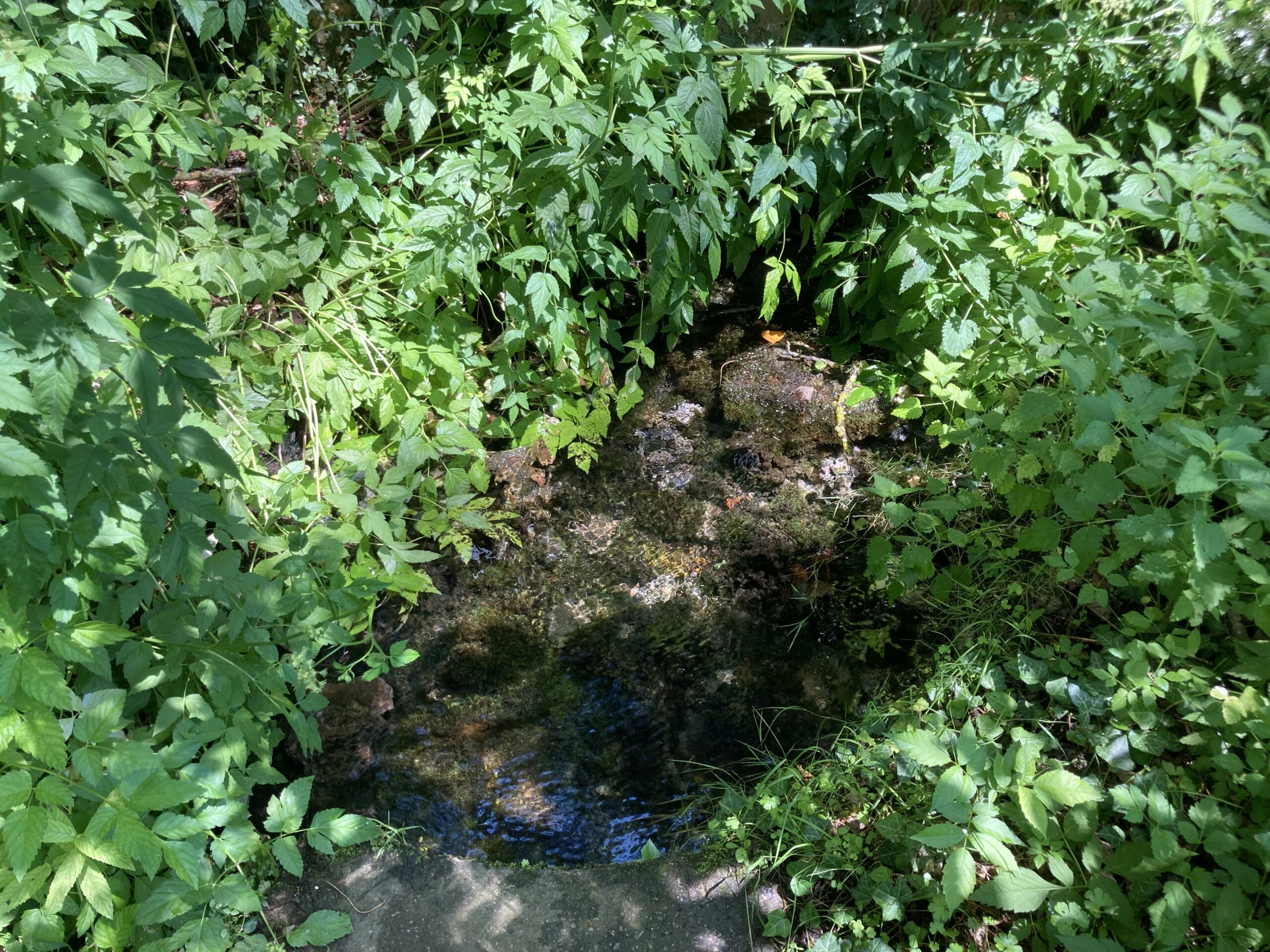
In fact, there are plenty of spots like this one where, if you are lucky or patient, you can clearly see bubbles coming up from the depths of the water. Underground rivers and streams of all sorts eventually find their way back to the ground level, in order to feed one of the biggest lakes in Europe.
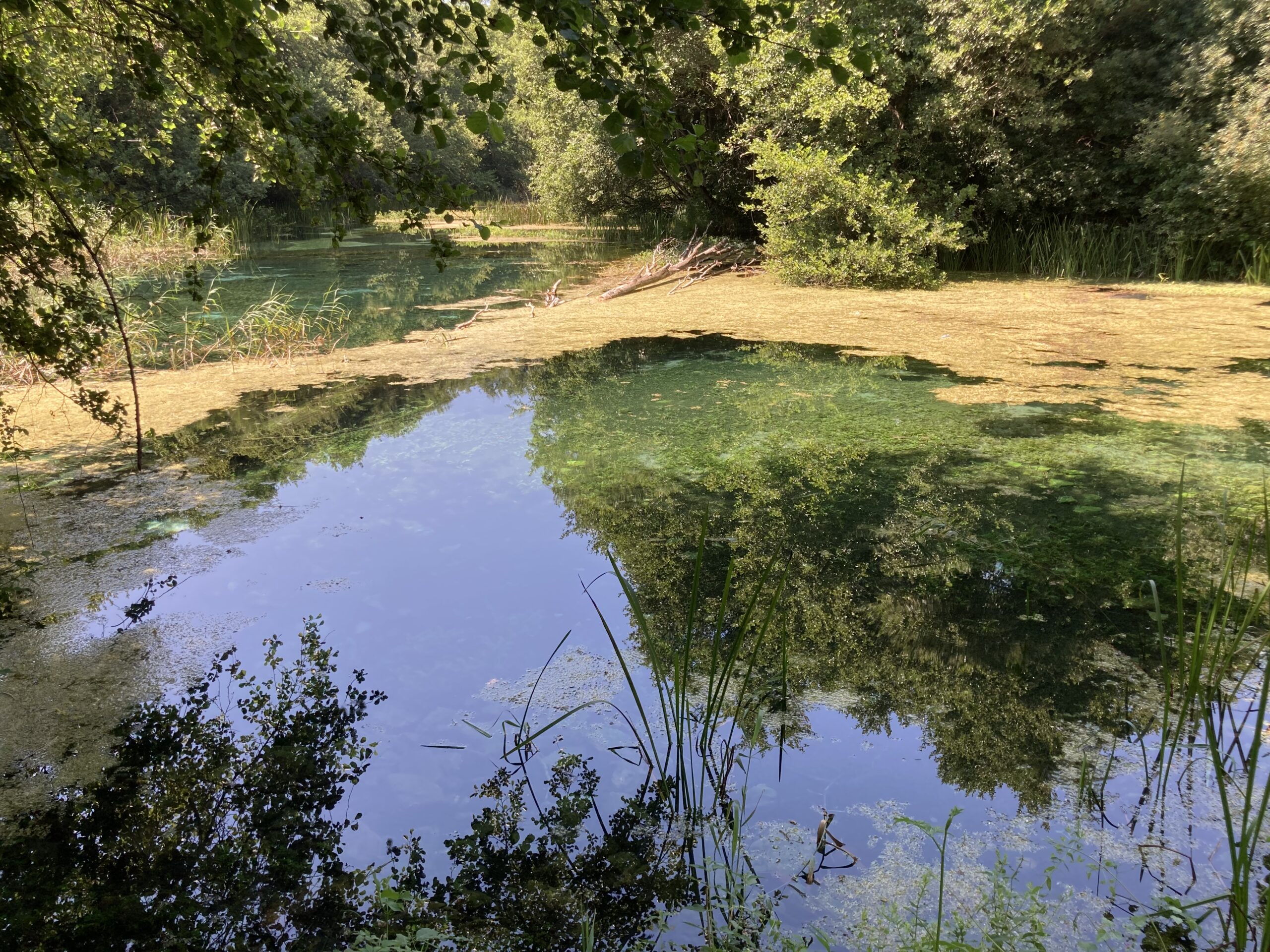
When you search for the “proper” spring that feeds Lake Ohrid, however, it is photographs like this that will pop up on Google. This was in fact a mesmerizing spot. A small lake which turns into a small river, which eventually pours into the Lake Ohrid to give it life, per se.
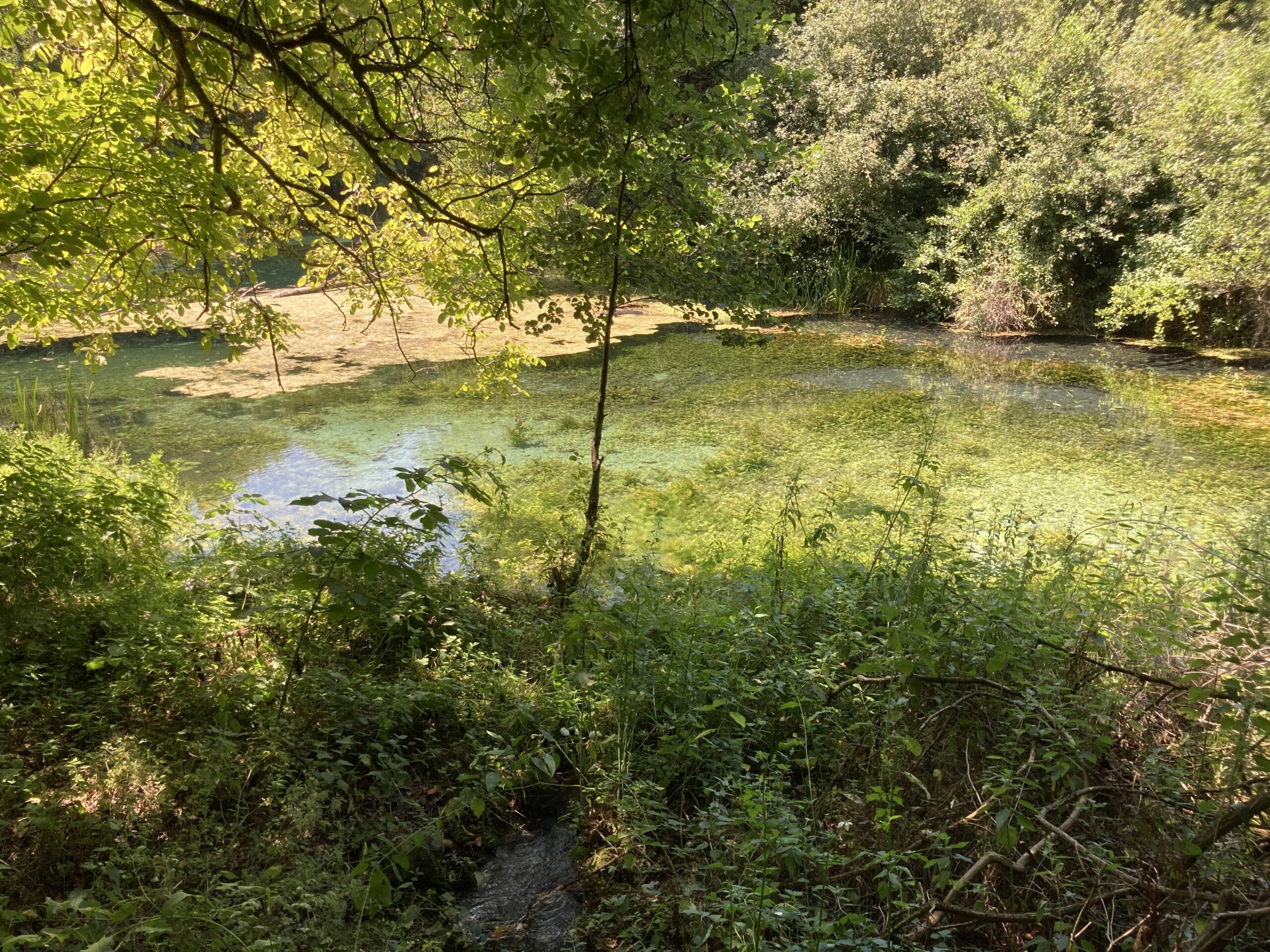
Unfortunately, so much humidity and greenery lead to some other things coming to life as well, and by that I mean insects of all sorts. They are practically everywhere on your way to these springs, and once you arrive, they will be swarming all around you. I have seen bugs that I could not even see in my wildest nightmares, and that says something. I was also bitten so hard by so many different things here that, in a few days, my arms and legs were swollen in multiple places. Better pack some insect repellents if you would rather not face a similar fate!
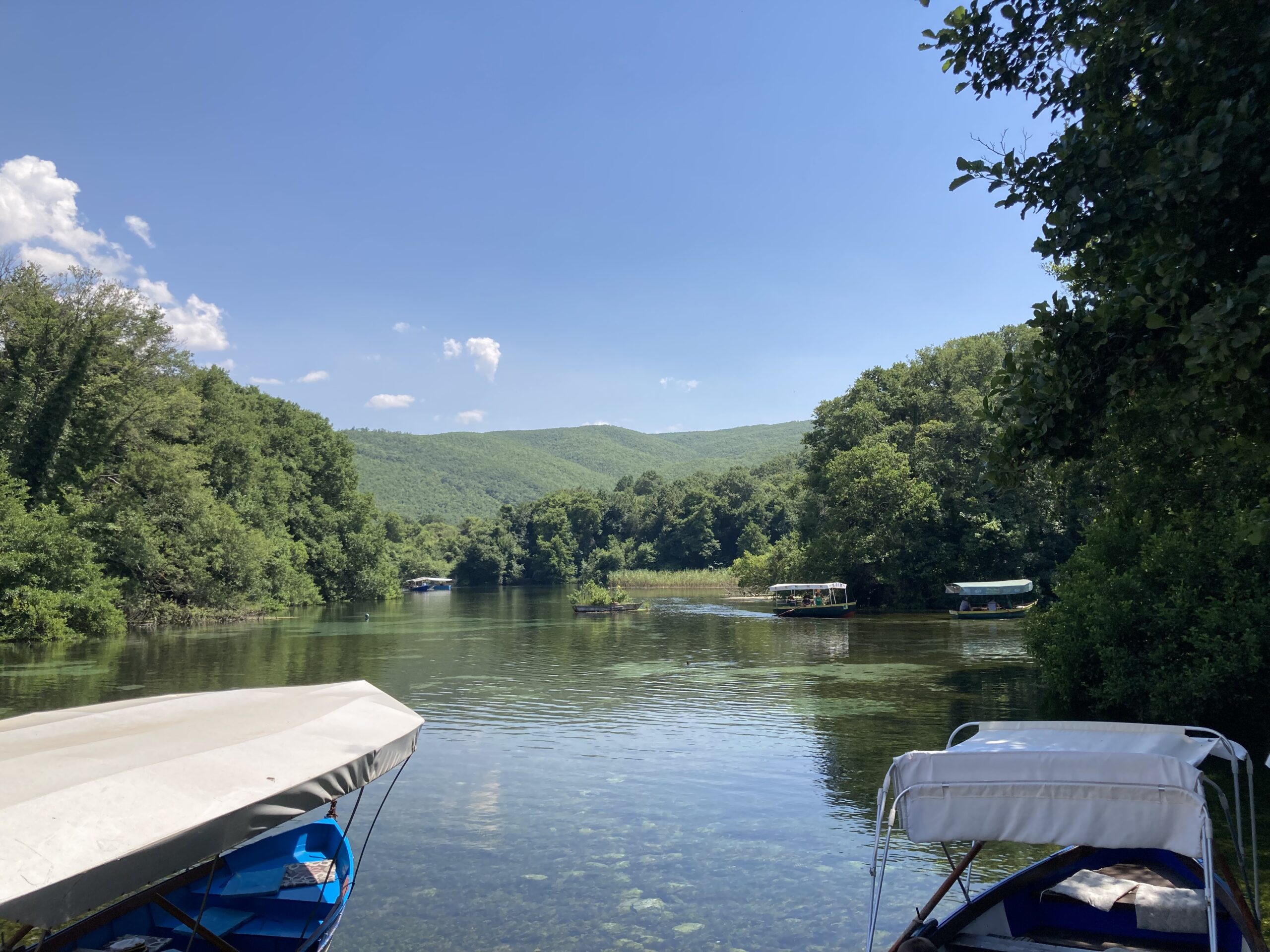
I should note that, alternatively, you can take one of these smaller boats to explore the area at the leisure of your seat. I did not ask for their fees, but I suspect they cannot be much more than ten Euros per person, likely less.
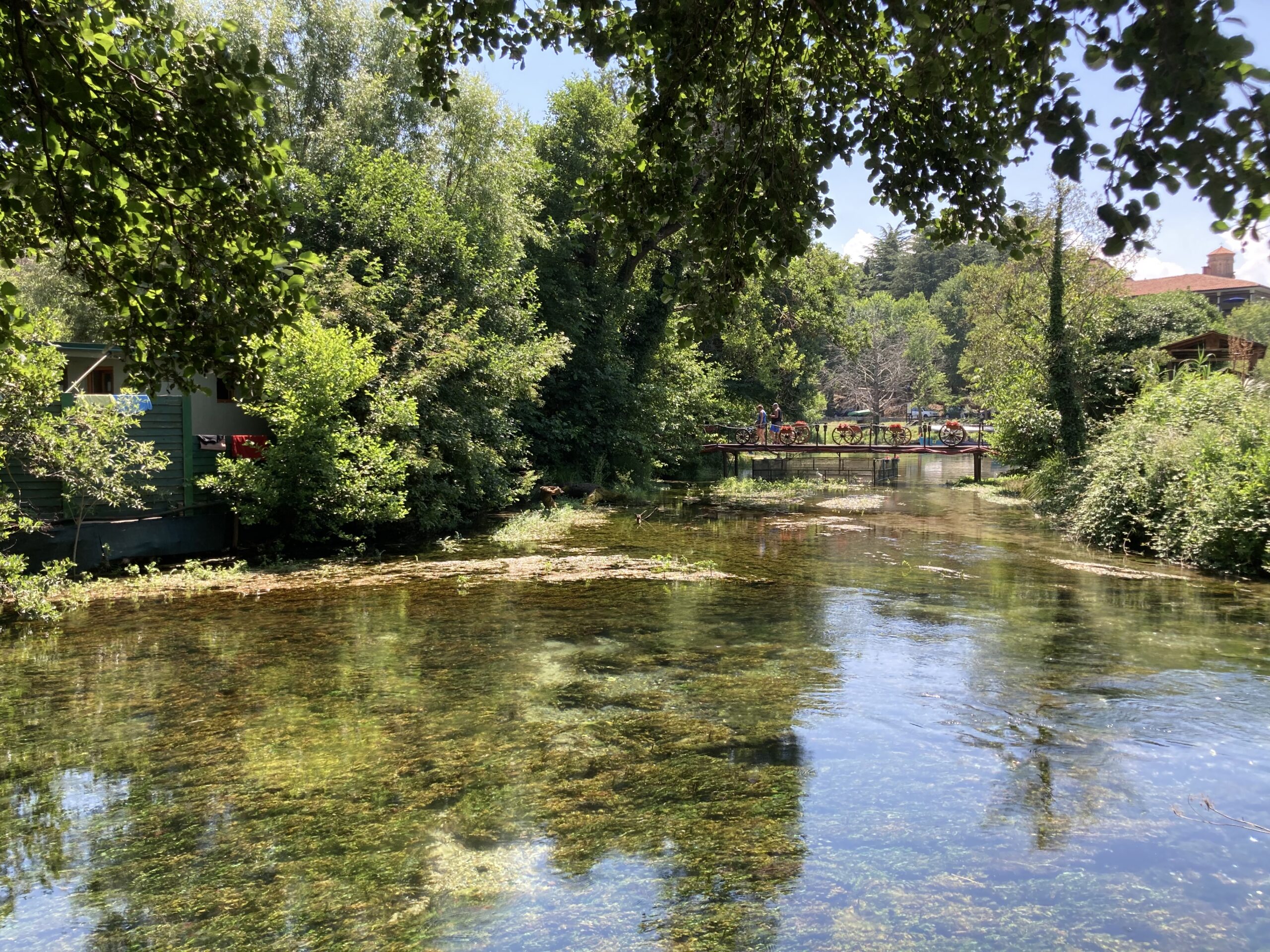
There are some restaurants with a view at this part of your journey, and a fascinating beach to enjoy. Already having some emergency burek on my side, I opted for the latter. The water in this part of the lake is very clean, since you are practically swimming in its birthplace, and the beach is more or less sandy. A boat tour is the most enjoyable way to explore Lake Ohrid, in my humble opinion, however, in full disclosure, it is not the only way. Furthermore, it is the most expensive way of doing it. You can also take a bus to get you to St. Naum, and all the other spots I mentioned so far with the exception of the Church of Mother of God Zahumska, which is only accessible from the water and by small boats. Nevertheless, if you want to read more about how to take the bus I said and on other swimming opportunities around Lake Ohrid, feel free to check out my previous article.
